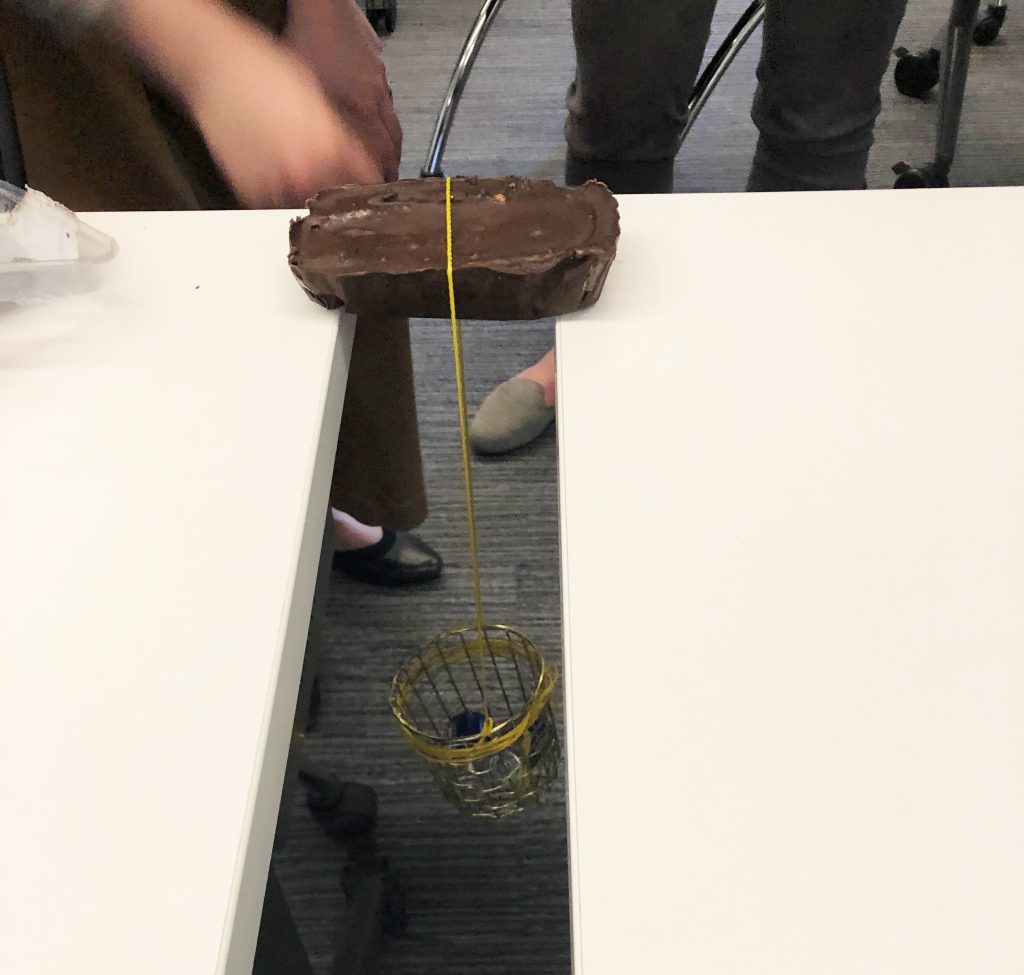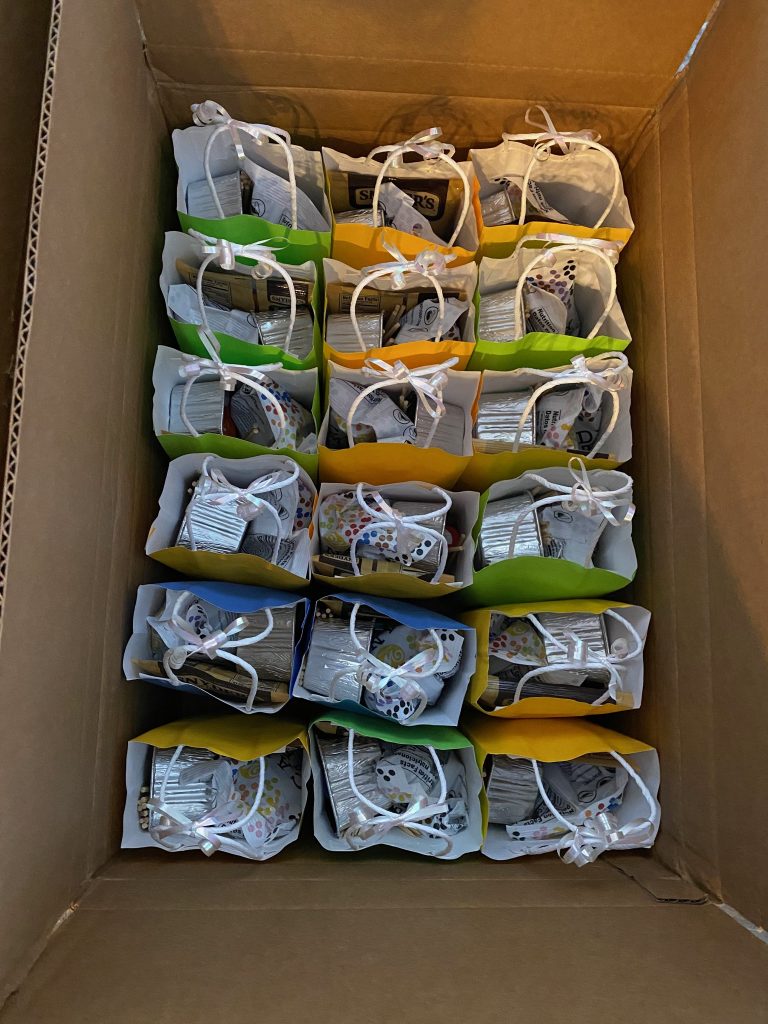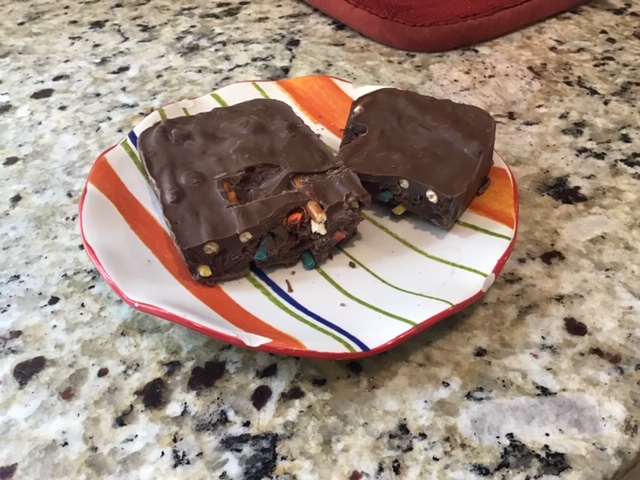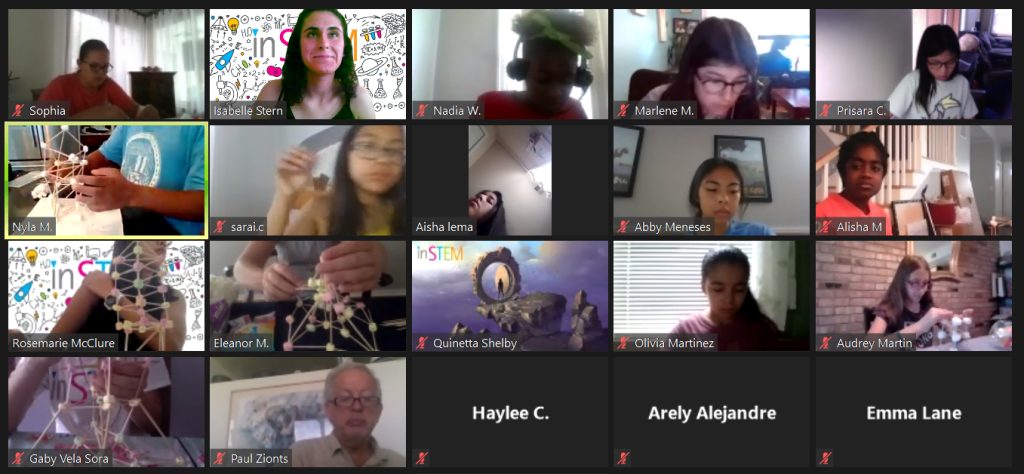Bringing Engineering to Life in Innovative (and Delicious) Ways

Over the past several years, SGH Project Consultant Isabelle Stern has volunteered her time coaching students interested in science, technology, engineering, and mathematics (STEM). Here, she shares the importance of using methods that are fun, easy to grasp, and even tasty.
What type of volunteer work do you do?

I work a lot with K-12 schools. In 2019, I helped lead a team of women in our Chicago office to start a civil engineering section of DePaul University’s “inSTEM” camp, which provides mentorship activities for middle school girls in the Chicago area. I participated in person in 2019 and then virtually during COVID, designing challenges like making chocolate concrete and marshmallow toothpick structures to teach the girls about structural and architectural engineering. SGH fully supported these activities and made sure all the girls had access to the materials they needed. It was cool to see the same campers come back for several years and then transition to being high school mentors for the younger girls.
Now that I’m based out of SGH’s DC office, I serve as the Community Service Chair with the ASCE Richmond Branch. Earlier this year, I led a popsicle stick bridge competition for middle and high school kids in the area as part of the Richmond Joint Engineers Council Celebrate Engineering Ingenuity (CEI) Day. We had more than seventy teams compete from local middle and high schools. My team from ASCE worked with schools, teachers, and parents to provide a rule book for the kids’ popsicle stick bridges—we even provided a load testing frame and got to break a bunch of bridges. The students became very invested in it, and several of them emailed me afterward asking about different engineering principles and if their bridges were compliant. I was basically going through a normal SGH project process at a school level, which was very enjoyable.
What does it mean to you to mentor young students and see them grow?

Supply kits packaged and donated to each camper
I liked math and science throughout middle and high school. I always built things and knew I wanted to do something artistic and creative for my career, but it wasn’t until college that I learned about civil engineering. I loved that it was so people-oriented. You don’t have to be in the lab all the time or secluded doing research—it’s very community-driven and you get to see everything around you that civil engineering touches.
It’s fun to bring these concepts to younger students in meaningful and applicable ways and to show them all that engineers can do. It’s exciting to watch them get invested in building chocolate concrete beams, using popsicle sticks as bridges and different aggregates out of candy, and having them do multiple iterations to see what they’re learning. I love seeing them take an interest in all of it, and year-to-year they continue requesting that we come back, which is a great feeling to know that they enjoy what we’re introducing them to. Overall, getting to show these younger students what exists is what means the most to me.
Why is it significant for you to use materials such as chocolate or other candies to help teach engineering principles?
Unless you’re an engineer, you probably aren’t looking at concrete and thinking it’s very exciting; it’s not necessarily colorful or pretty. When you walk on the sidewalk or into a building, you’re not thinking about what you’re walking on. We want to be engaging and relevant to these students, so if we can make an activity simultaneously tasty and colorful, it usually helps to spark their interest and helps them grasp the concepts much easier. I think it’s important to use tangible items and tools to demonstrate concepts. Tension and compression, for example, can be a little tricky if you’re just listening to a lecture, but if you can play around with different materials and experience what’s happening, I think it helps the students visualize and understand the concepts. Plus, these chocolate beams are pretty strong. It’s impressive.

A student-made chocolate concrete beam
What have you learned from your involvement with these organizations?
When we first started in Chicago, there were a few students that were very quiet and shy, and it was difficult to know if we were getting through to them. We started breaking up our SGH volunteers into smaller teams with these students so that it was a more comfortable setting and encouraged them to ask more questions. It’s really helped bolster our relationship with these girls, and after three years the quietest one became the most enthusiastic about learning and teaching the younger girls. I think just showing people that you care about getting through to them and wanting to help them goes a long way.
It also helped me see how simple acts of being there for people can leave a long-lasting effect, even if it’s something small like giving out your email and encouraging the students to ask questions. They were very receptive to that and were excited to dive into different engineering topics.
What motivates you to continue volunteering your time to help these students?

A lot of people have helped me get to where I am today. I’ve had a lot of support and mentorship, so I believe it’s important to give back and help others receive the same support. Especially during COVID, students were stuck at home and things were much less engaging than normal, so having them do something hands-on and meaningful helped show them that you can take what you learn in school and then go in the real world and make something interesting with it. Work doesn’t have to be boring, the world around you can be fun, and you can do something every day that makes you happy.
Also, I know it means a lot to the students, but it also means a lot to me to see their enthusiasm for learning. Their excitement makes me more invested to learn new things at my job, so I can bring new concepts back to them. Just seeing that we’re making an impact is a lot of motivation for me.